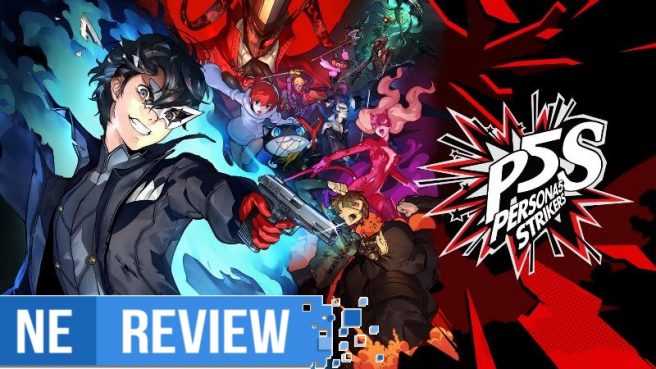[Review] Persona 5 Strikers
System: Switch
Release date: February 23, 2021
Developer: Koei Tecmo / Omega Force
Publisher: Atlus
Less than a month after the Switch launched in March 2017, Atlus and P-Studio released the critically acclaimed RPG Persona 5 on PlayStation platforms – and since then, fans of the franchise have been begging the powers that be for a Switch release of the high school simulator/interdimensional dungeon-crawler. That has yet to happen, but the launch of Persona 5 Strikers is perhaps the next best thing – a sequel that shares the iconic characters and sense of style of Persona 5, but featuring an entirely new story and style of gameplay that’s even faster and flashier than the original game. Strikers is an excellent action game with an engaging narrative that is sure to captivate any fan of the franchise – but newcomers to Persona may have a hard time jumping in without playing the original.
Strikers begins a few months after the conclusion of Persona 5, and ignores the extra story content added in the expanded Persona 5 Royal, so those who have only played the 2017 version of the game can still jump right in. High school in Tokyo is out for the summer, and Joker – the protagonist from the original game – has returned to the city to reunite with his old friends. The game begins with the gang meeting up at Café LeBlanc to hash out plans for a summer road trip across Japan, having saved the world from cataclysm only a few months ago as the Phantom Thieves. As a huge fan of the original Persona 5, seeing the cast of angsty anime high schoolers again felt like revisiting old friends, and I was thrilled to see that all of the original English voice actors had reprised their roles.
Unfortunately, a mysterious string of events happening around Japan is negatively affecting the public at large – people in positions of fame and power are somehow manipulating their followers to act in strange, sometimes cultish ways, and the police believe the Phantom Thieves are the ones responsible. In an effort to clear their names and figure out what is behind the strange behaviors, Joker and company decide to travel across Japan to try and change the hearts of those affected.
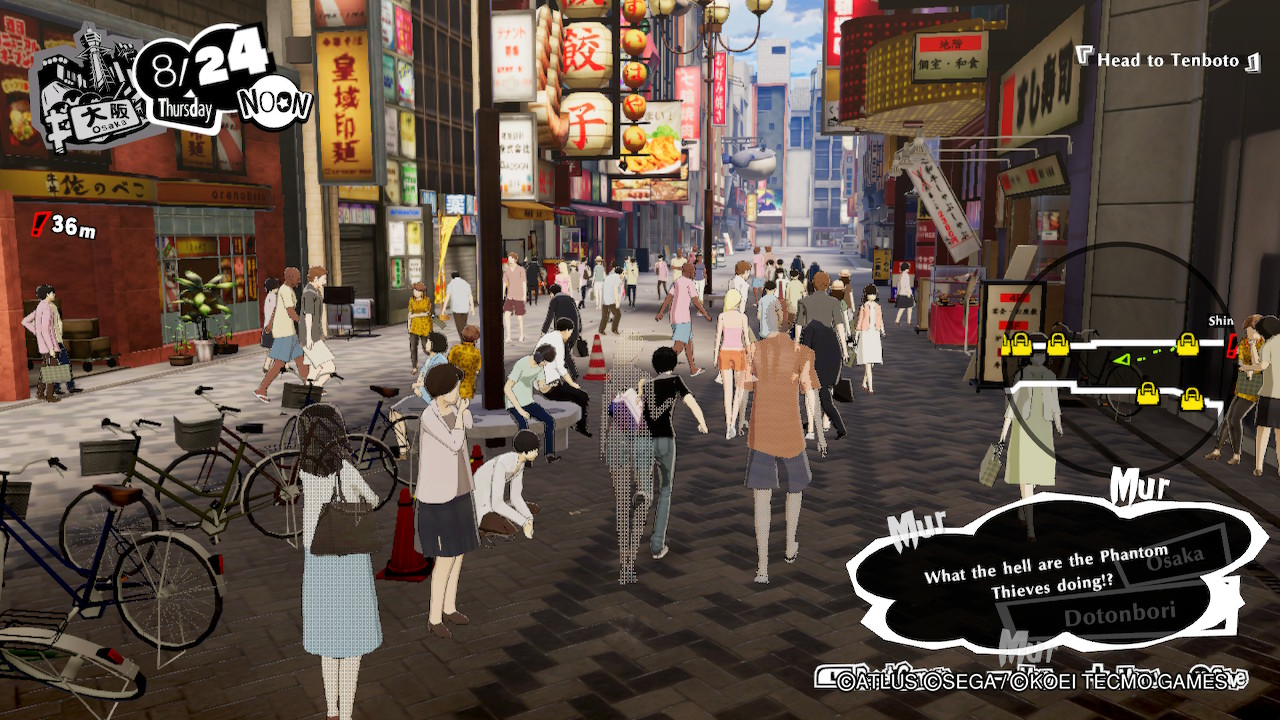
The premise certainly shares a lot in common with Persona 5 and at first, I was a little worried that Strikers would feel like little more than a rehash of the original game’s story. But it quickly became clear that the scope of Persona 5 Strikers is significantly larger than that of its predecessor. While the game begins in Tokyo, it isn’t long before the Phantom Thieves are exploring mountain towns, seaside villages and major cities across Japan, and this frequent change of scenery really makes the stakes of Persona 5 Strikers’ narrative feel much higher. It helps that the main antagonists of the game – who I won’t spoil – all feel like real people who genuinely need to be stopped, even if there is a level of absurdity to some of their actions.
Persona 5 Strikers is essentially split into two halves. Most of the game is spent exploring a parallel dimension called the Metaverse, which is a bizarre, hyper-stylized version of reality infested with monsters called shadows. Each major city that the Phantom Thieves travel to in-game has its own alternate version in the Metaverse. In order to progress through the game, the Phantom Thieves have to track down and fight the “Monarch” presiding over the area, but getting to them means battling through thousands and thousands of enemies. Here is where the first major difference between Strikers and Persona 5 becomes apparent. The turn-based combat of the original has been replaced with real-time, hack-and slash combat that shares a lot in common with the musou subgenre of games. But while I generally find many musou games to be pretty mindless, combat in Strikers is challenging and demanded my full attention while playing.
Sure, you can hack and slash with your sword, string together predictable combos, and dodge out of the way of attackers – typical mechanics for this type of game. But the game also allows each of the characters to use their Personas – think supernatural Pokemon – to launch elemental magic and powerful physical attacks at enemies to target their weaknesses. For example, the Jack Frost shadow that you’ll fight throughout the game is weak to fire, so it would be wise to swap to a character with a Persona wielding a fire-based attack ability. These abilities can be called up at any time during combat (presuming you have enough Stamina Points) and doing so pauses the action on screen, allowing you to take your time to select your next move. The moment the attack is launched, combat returns to real-time and the chaos continues.
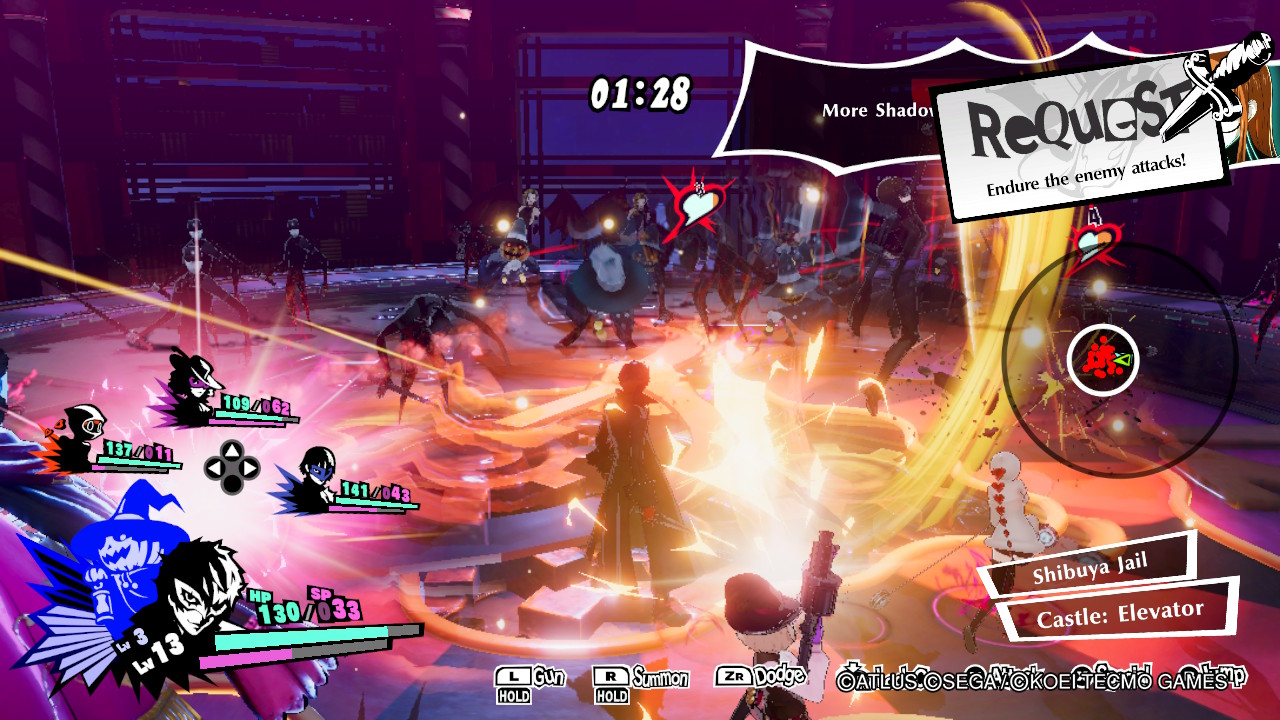
Personas can also be used to heal your allies and launch out stat debuffs at your attackers, and new skills become available as you progress through the game. When a powerful Persona is collected, it can be fused with other Personas to form new ones that are stronger and have new abilities. Persona fusion here isn’t as in-depth as it is in the mainline games, and can mostly be avoided if it’s not your jam, but doing so has plenty of benefits in combat and is important at higher difficulties.
It’s a clever way to adapt the mechanics of the mainline games into a totally different genre, and for the most part, it works. Reading the strengths and weaknesses of your enemies and then utilizing your Persona attacks isn’t the most complex combat mechanic, but it helps prevent the game’s combat from becoming too repetitive. I also enjoyed swapping between different characters during combat. Joker was my favorite to play as because of his ability to wield multiple Personas, but I also enjoyed the nuance of Yusuke’s charge attack, and the slow but powerful attacks of Haru’s hammer.
I did encounter some frame rate drops in combat, but only when the game was really pushing the number of enemies on screen to an absurd degree. More often than not, the game ran at a smooth 30 frames per second on Switch, although I admit I’m a bit jealous of PC players as the game looks fantastic at 60 FPS on other platforms. Beyond those occasional drops, though, Strikers looks fantastic on Switch. There’s a lot of anti-aliasing on character models, but environments are beautifully rendered and all of Persona’s signature style is on full display. Even the menus in this game have a polish and creative flair to them that is all but unmatched across the medium.
Each of the dungeons in the Metaverse – technically called Jails in-game – also involves a fair amount of perceived exploration. I say “perceived” because while it oftentimes feels like you are exploring, progressing through the environments themselves is usually quite linear. On the other hand, the dungeons in Strikers have a grandeur and sense of spectacle to them that I feel makes them much more engaging places to navigate. The game’s first dungeon, Shibuya, spans multiple sections of the city, and I loved seeing what types of enemies or treasure chests could rest around each corner. I also generally enjoyed the feel of moving through these environments. While sprinting through the streets and charging headfirst into battle is a viable option, I generally preferred sneaking around obstacles and leaping from cover point to cover point. They are the Phantom Thieves, after all.
One aspect of exploring the Jails that completely fell flat for me were the occasional 2D platforming selections that popped up from time to time. Here, moving your character suddenly becomes a chore and everything that feels good about the game’s moment-to-moment navigation is completely lost. There are only a handful of these in each dungeon, but I really felt they pulled me out of the experience, and the game would have been better without them.
When you’re not decimating enemies in combat and exploring surreal dreamscapes, you’ll spend the other half of Strikers in modern-day Japan. This is where most of the game’s main story beats take place, and it’s a fantastic translation of the real-word segments from Persona 5. Each of the new locations the Phantom Thieves visit is gorgeous, even on the Switch. Streets are dense with passersby and market stalls, and some of the natural environments can be genuinely beautiful at times. The cities feel like genuine, lived-in places, and going to a new city was always an exciting moment.
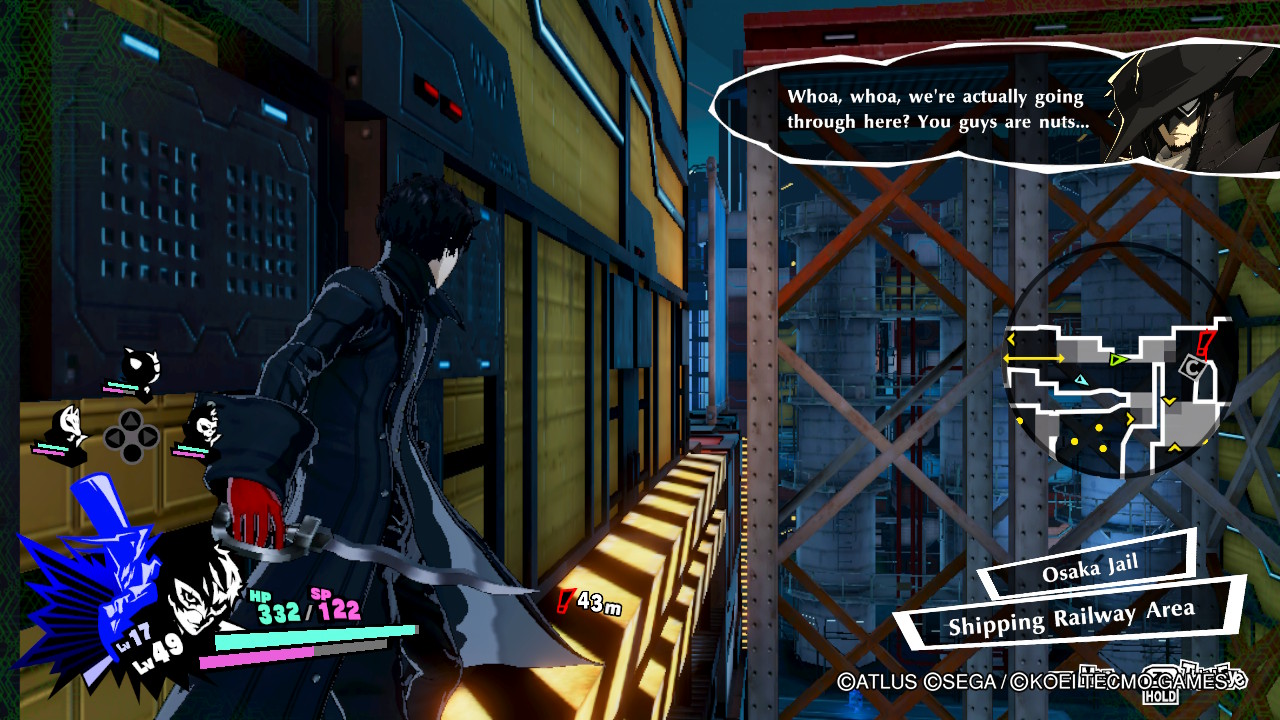
Unfortunately, unlike in Persona 5 there is extraordinarily little to do in each location, mostly because Strikers also abandons most of the RPG mechanics from 5. A huge part of the original game was choosing how to spend your time from day to day. Would you study at the library with Makoto to raise your knowledge and get closer to her? Stop by the gym to improve your strength? Go to the electronics store with Futaba to help her break out of her shell?
Well, you won’t have to make any of those choices in Persona 5 Strikers, because none of those mechanics exist. Instead of levelling up your relationship with individual teammates by choosing who to hang out with, there is a shared group “Bond Meter” that increases at arbitrary points in the story. Instead of leveling up your skills by choosing where to go around town, you do so by spending Bond Points and leveling up Personas.
All of this is fine in the context of the game’s pacing – this is a 40-hour action game, not an RPG – but it means all of the locations you will visit are skin-deep in their beauty. You’ll walk by countless restaurants, arcades, and tourist attractions you can look at, but not interact with. Your actions in each city are limited to shopping for health-restoring items at stores and taking care of some basic fetch quests for your fellow Phantom Thieves, but that’s genuinely about it. Because of this, I feel like the game is lacking a big part of what made the original Persona 5 such an excellent piece of virtual tourism.
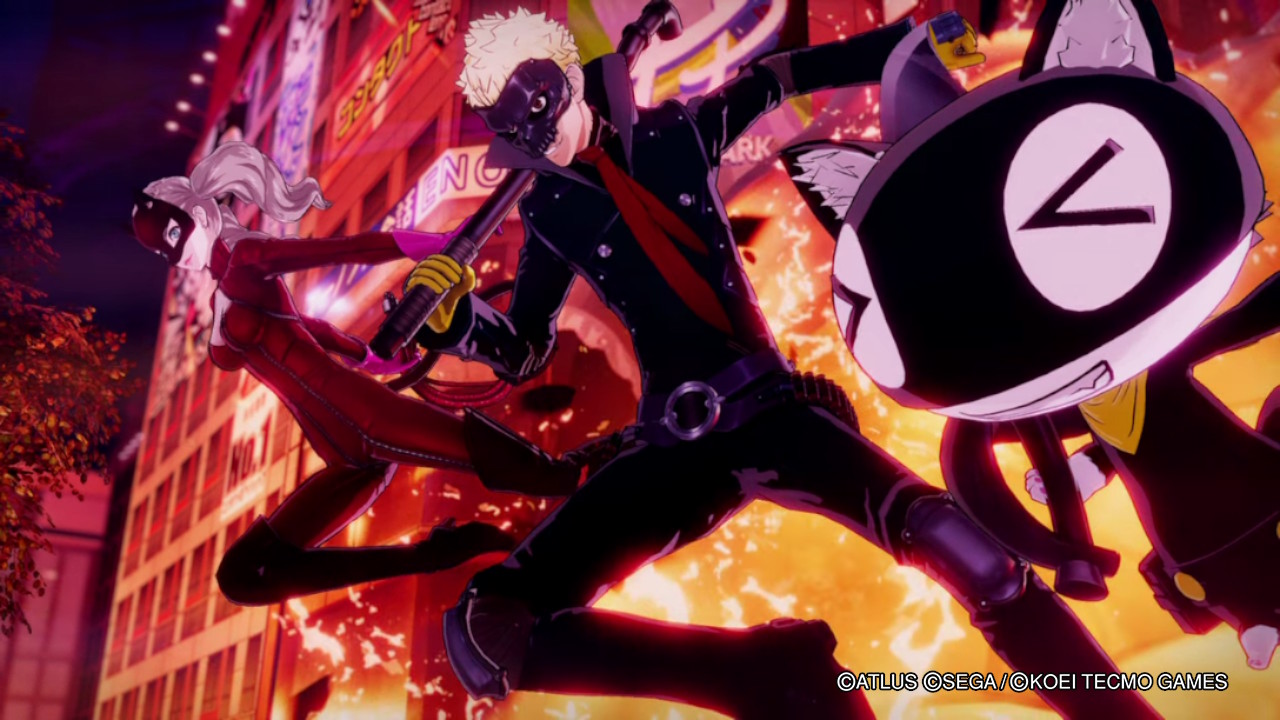
Fortunately, my eagerness to progress the story meant that I was able to accept to shallow interactions with the cities themselves in exchange for watching the high-quality interactions between all of the characters. That has always been a huge part of the appeal of the Persona games for me – getting to know the characters and watching them grow as the story progresses. The returning cast in Strikers already went through a full narrative arc in the first game, and so it’s really the new characters who steal the show most often. I don’t want to talk about them too much, because they’re such fantastic additions to the Persona 5 canon that I think fans deserve to meet them for the first time themselves.
It is worth mentioning, though, that those with low tolerance for over-the-top writing and voice acting might have a hard time getting through this game. Don’t get me wrong – I love the teen cast of Persona 5 Strikers. They are funny, eager, and dramatic, and feel like real teenagers in a lot of ways. But I have a high tolerance for overzealous writing, and even I found myself rolling my eyes at some of the dialogue in this game. Do some high school students talk like this? Probably! But will some people maybe not want to listen to them talk like this for frequent hour-long dialogue sequences? Maybe not. (And yes, there are literally hour-long dialogue sequences – which I enjoyed, but others may not). It becomes most grating in dungeons, where characters frequently repeat lines every time you sneak up on a shadow or open a treasure chest. Bless Futaba’s heart, but I was immensely tired of hearing her yell “Score! Now let’s get some more!” by about the fifth time it happened.
One thing I didn’t get tired of listening to, however, was the music in Strikers. Each city and Jail has its own accompanying music tracks- there are some remixes of classic Persona 5 tunes, but there are also some really great original songs. All of them are outstanding and up there with the rest of the music across the Persona series. Hopefully, it won’t take four years for this game’s soundtrack to come to music streaming services.
The Verdict
Persona 5 Strikers is not a turn-based RPG, but it feels like a Persona game through and through and is an easy recommendation for fans of action games and supernatural high-school mysteries alike. I was floored with how much of Persona’s identity and charm was carried through to this spin-off sequel, and although newcomers should definitely play the original Persona 5 before this one, anyone with an appreciation for frenetic real-time combat will likely find something to enjoy here.
Review copy provided by the publisher for the purposes of this review.
